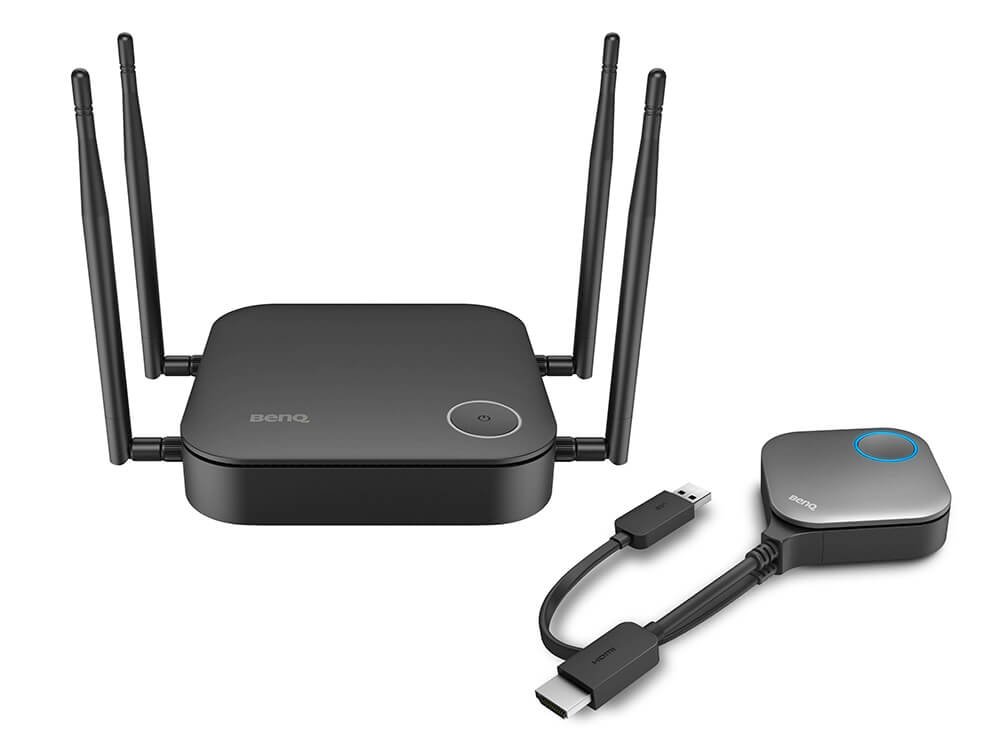How to Wirelessly Connect Your Phone to a TV ?
- BenQ
- 2022-06-10
The modern smartphone you have in your pocket or purse has more power than a 1980’s mainframe computer, and a 4K television has over 8.3 million pixels for you to share your presentations or photos right from that phone. Many of us have more smart devices in our homes than ever before, but we don’t know how to easily share content among them. If you are working from home or have huddle rooms in your facility, you should to take a closer look at how to connect phones wirelessly to your TV quickly and easily.
There are three ways you can wirelessly connect your phone to TV :

The Solution
The A proprietary app that runs on your phone to stream content over your wireless network. This was one of the early ways that businesses started using with phones to wirelessly connect to a TV, and the method remains especially popular for interactive displays in classrooms. For huddle spaces and home offices, this approach has drawbacks.
First, the receivers use up your network bandwidth to stream video, which can slow speeds down for everyone else. Also, most of these systems have specific network configuration requirements regarding which ports to open or how much bandwidth you have to have, and may require special features such as multicast to be configured. More importantly, if you have a visitor who wants to share content from their device, they will have to download the app and then gain access to your network. This is a security risk IT managers try to avoid, as once a hacker gains access to your network, a lot of damage can be done in a short time. Some of these systems have also shown security flaws that allow hackers to use the receiver to break into your network and potentially shut it down.
If you are looking to only do wireless screen mirroring of content occasionally, and have a Google Chromecast or Apple TV setup to stream content, either of these devices can be used to connect to your phone. These systems use either Miracast or AirPlay features that are already on your phone. They are best if you occasionally share photos as compared to PowerPoint or video files, where your audience will be more sensitive to delays and lower quality.
Recommended Product
Wireless Presentation System BenQ InstaShow
WDC-20 & WDC-30

- Compatible with multiple devices
- Enterprise-level encryption with AES-128 bit
- Up to 4K@30Hz, split in 4 screens. Support multi-person collaborations.
This is for you if you are in an environment where you have visitors wanting to use your display or require an extra layer of protection for your network while needing to co-share contents with high efficiency and quality. Consider a wireless presentation system. These are designed to allow all kinds of devices to share your TV, especially smartphones.
The advantage are these systems have for wireless screen mirroring over proprietary apps is that they enable you to share content faster and more effectively without a lot of fuss. For these devices, it doesn’t matter if you are sharing video, PowerPoints, keynote presentations, or regular emails. The video and audio work as they do on your phone. For Android phones, you can even go into desktop mode, where the phone sees your TV as a giant desktop monitor.
There are other advantages, as well. No application or networking required to set up and use the system. A system like BenQ InstaShow utilizes its private network to stream content and keep traffic going secured and smooth. The one click sync button allows up to 4K resolution to elevate connectivity and meeting productivity.
Moreover, content is protected by 128-bit AES authorization, as InstaShow passed the ISO/IEC 15408 / EAL6+ certification to ensure wireless content transfers with high security thanks to a robust encryption environment. This is especially important for home offices, where the wireless signal could be received by a hacker on the street.
Wirelessly mirroring your phone`s content to your TV is a very easy way to share content, but your main priority is entertainment and personal sharing, then for sure it’s fine to look at using Chromecast or Apple TV. But if you are using your TV as a work display for a home office or huddle space, then you want to consider upgrading to the next level with a wireless presentation system to ensure your content and network stay secure, while eliminating the need for complex network configuration and bothersome proprietary apps.
The InstaShow WDC-20 and WDC-30 are designed to connect phones wirelessly to a TV, as well as lots of other devices such as media players, notebooks, tablets, and digital cameras. They can be used with AirPlay and Miracast, helping you split the screen up into four different sections to share photos or other content from your phone. That’s an intuitive, fast, and secured solution for wireless device pairing and content mirroring.
Want to talk to an expert?
Wireless screen mirroring systems are relatively new on the market, but you can find more detailed on the BenQ Wireless Presentation System page which has more in-depth articles on popular topics such as using Mac or audiovisual devices with a screen mirroring system as well as comparisons of popular models. Fill the form below, and get in touch with our team to learn more about InstaShow.
Recommended Articles
-
Trends & Knowledge
Apple TV for Conference Room Display vs. BenQ InstaShow
2022.12.20 -
Trends & Knowledge
How to Connect a Laptop to a Projector?
Looking to learn how to connect your laptop to a projector? This article explains how to do so with cables or wirelessly.
2023.02.14 -
Trends & Knowledge
How to Connect a Mac® Device to Your Projector for Screen Mirroring?
Learn three great ways to connect your Mac laptop to a projector for screen mirroring with cables or wirelessly.
2023.03.13